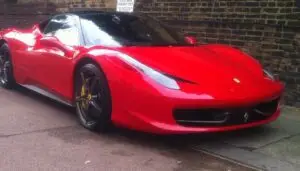Protect Your Car’s Finish With Paint Protection Film
Paint protection film (also known as Clear Bra or Stone Guard) saves your car from a lot of the everyday damage you might get. It can resist rock chips, scratches, bird droppings and tree sap.
It also helps to reduce the amount of washing you’ll need to do since it has a self-healing property.
Can paint protection film go through a car wash?
While it may be tempting to take your car through the drive-thru wash, doing so can potentially damage your paint protection film. This is because a pressure washer’s high-pressure water can cause an abrasion to the protective film, which can result in the appearance of small scratches. Instead, it’s a good idea to handwash your car with proper cleaners and care.
because a pressure washer’s high-pressure water can cause an abrasion to the protective film, which can result in the appearance of small scratches. Instead, it’s a good idea to handwash your car with proper cleaners and care.
Besides reducing the time spent on cleaning, paint protection film can also save you money in the long run by preventing costly repairs and maintaining resale value. Repainting and constant waxing can be very expensive, while paint protection film provides an affordable alternative that’s also self-healing.
Originally developed to protect helicopter rotor blades from shrapnel, debris and dust during Vietnam, paint protection film is a transparent lightweight polyurethane based material that’s designed to be an extra skin for body panels. The most advanced products are capable of repelling chemicals, light swirls and scratches, toxins, road grime, bird droppings and other contaminants to keep the vehicle looking new for years to come.
Can paint protection film go through the sun?
The sun’s harsh UV rays are the most common cause of car paint fading, and if your vehicle is exposed to sunlight for extended periods, it will eventually need to be repaired. The good news is that paint protection film can prevent this from happening. This transparent polyurethane layer is applied to your car’s surface and creates a barrier against the elements that can damage your car’s paint.
Paint protection film was originally developed by the military to protect helicopter rotor blades from damage during deployment. It’s designed to be crystal clear and is shaped to cover high-impact areas such as your car’s hood, front fenders, mirrors, and rocker panels. It also protects the bumper and fender edges, where most fender benders occur.
PPF is a safe and effective way to protect your new or used car, and it can help save you thousands in repair costs over time. It’s self-healing, extensively tested, and factory-backed.
Can paint protection film go through the rain?
Paint protection film serves as a sacrificial layer to shield your car’s finish from scratches, stone chips, flying debris, and parking lot carnage. It also protects against organic acids – bug guts, bird droppings, tree sap, and more – as well as UV rays that cause fading and discoloration of your car’s paintwork.
Once the urethane layer is applied, it will flex when impacted by debris or flying stones, absorbing most of the impact and spreading it to a broader area, protecting your vehicle’s paint from damage. It’s important to find a qualified and experienced detailing shop that understands the intricacies of PPF installation, as this type of protective coating requires special care during its curing process. The pros at Alta Mere in Plano, Texas will make sure its done right!
Additionally, paint protection film has self-healing properties that can repair minor abrasions on the surface without requiring a trip to the body shop. This feature helps maintain your car’s resale value and keeps it looking showroom-ready for years to come.
Can paint protection film go through the snow?
Paint protection film, or PPF for short, is a polyurethane layer that covers your car’s painted surfaces. It is transparent and won’t change the color of your car. It’s also able to protect your vehicle from scratches and dings.
While it won’t prevent rust, etchings, and other major damage, it can help you save money on costly repairs. PPF can also reduce the amount of depreciation that your vehicle suffers over time, which can save you money when it comes to trade-ins or resale.
Typically, you’ll want to install PPF on your high-impact areas, which include the front and rear bumpers, side view mirror housings, hood, and fenders. However, it can be installed on any painted surface on your vehicle. Many PPF manufacturers also offer “fashion” films, which can be colored or matte and even come with carbon fiber finishes. This is a great way to add a unique look to your car without having to repaint the entire bodywork.


One Response